Palau de la Música Catalana is a concert hall located in Barcelona and is considered one of the most important examples of Catalan modernism. Built in 1905, the building was designed by architect Lluís Domènech i Montaner. Palau de la Música Catalana is full of organic decorations, one of the most important features of Catalan modernism. Every detail inside the building is designed inspired by organic forms of nature. These organic decorations contribute greatly to the aesthetics of the building. In addition, the colors and light games inside Palau de la Música Catalana add a separate beauty to the building. With all these features, Palau de la Música Catalana is considered a world-renowned work of art.
Historical and Architectural Features of the Palau de la Música Catalana
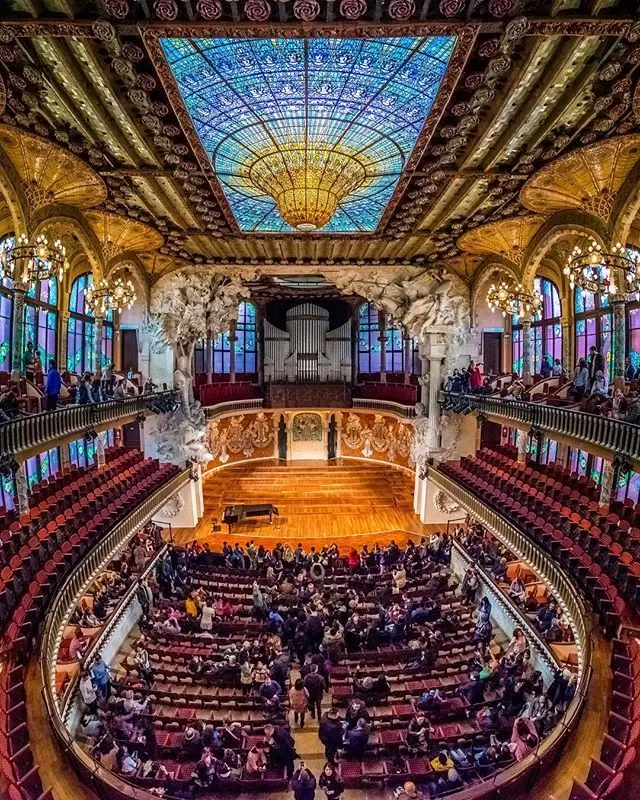
Palau de la Música Catalana is a concert hall located in Barcelona and is one of the most important examples of Catalan modernism. Built in 1905, this structure has become a symbol of Catalan music and culture.
Palau de la Música Catalana was designed by Catalan architect Lluís Domènech i Montaner. The architectural features of the building are full of organic forms and natural motifs, which are one of the most important features of Catalan modernism. The exterior of the building has a large arched entrance decorated with colorful glass mosaics. This entrance provides natural light to the main hall inside the building.
The interior of Palau de la Música Catalana is one of the most beautiful examples of Catalan modernism. The main hall has a high ceiling and a large area. The ceiling is designed in the shape of a large dome and has a sun figure decorated with colorful glass mosaics. The walls of the hall are covered with colorful stained glass windows decorated with organic forms. These windows allow natural light to enter and illuminate the atmosphere of the hall.
Palau de la Música Catalana has become a symbol of Catalan music and culture. The building hosts many concerts and events every year. It has also been recognized as a world heritage site by UNESCO.
In conclusion, Palau de la Música Catalana is a concert hall that is one of the most important examples of Catalan modernism. The architectural features and interior of the building have become a symbol of Catalan culture and music. This building is one of the most important tourist attractions in Barcelona and is visited by thousands of tourists every year.
The Place of Palau de la Música Catalana in the World of Art and Culture
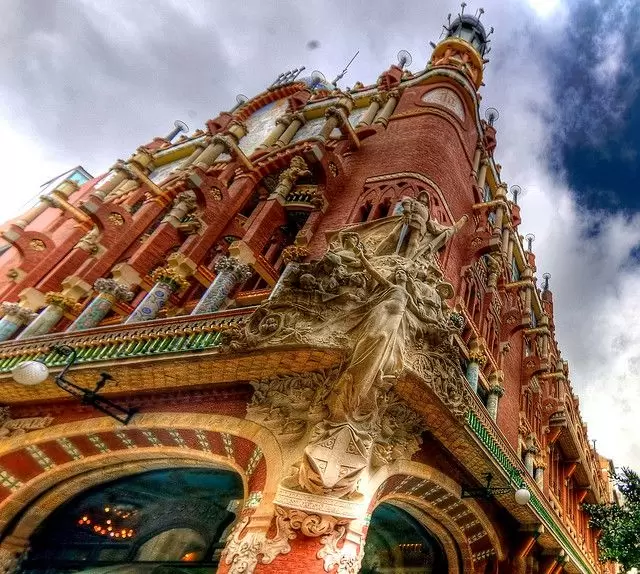
Palau de la Música Catalana is one of the most important cultural and artistic centers in Barcelona. This magnificent building, built in 1908, is one of the most important examples of Catalan modernism and is listed as a UNESCO World Heritage Site.
Palau de la Música Catalana is one of the most important symbols of Catalan music and culture. The building has contributed greatly to the development of Catalan music and still hosts many concerts and events today. Palau de la Música Catalana is also a place frequently visited by world-famous musicians and artists.
Palau de la Música Catalana is not only important in the music and culture world, but also in the architectural world. The building is considered one of the most important examples of modernism and has an important place in architectural history. The interior of the building is notable for its colorful stained glass windows, mosaics, and sculptures.
Palau de la Música Catalana also plays an important role in preserving and developing Catalonia's cultural heritage. The building serves as a center for the transmission of Catalan culture and music to future generations. Additionally, Palau de la Música Catalana makes a significant contribution to Catalonia's tourism industry.
In conclusion, Palau de la Música Catalana is one of the most important symbols of Catalan culture and music. The building has great significance in the music and culture world, as well as in the architectural world. Palau de la Música Catalana also plays an important role in preserving and developing Catalonia's cultural heritage.
Acoustic Features and Concert Experience of the Palau de la Música Catalana
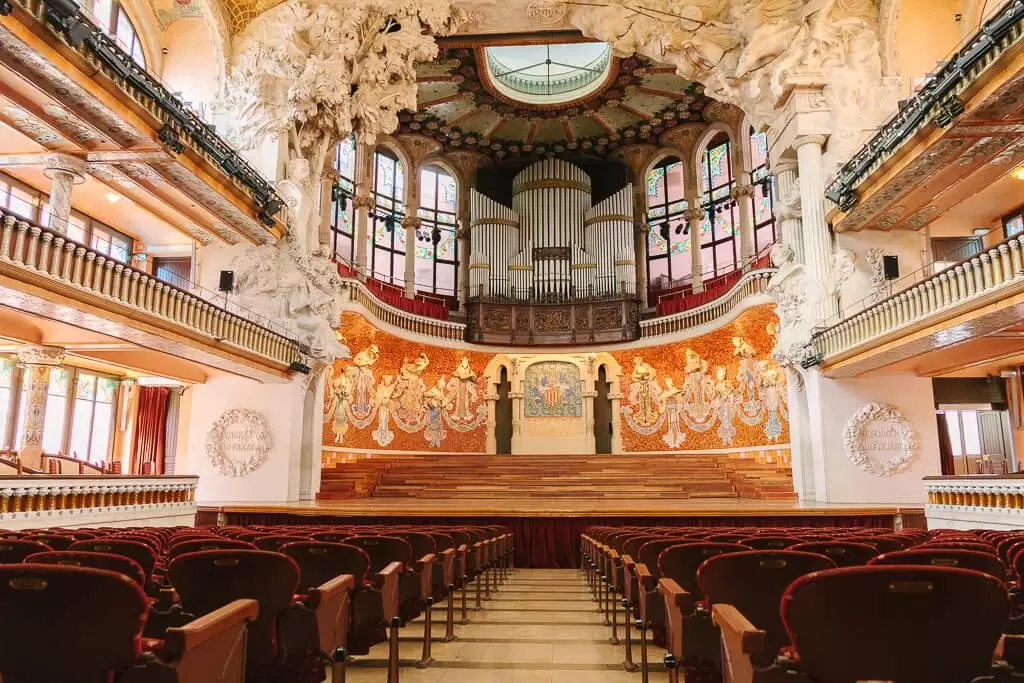
Palau de la Música Catalana is a world-renowned concert hall located in Barcelona. Built in 1908, this historic building stands out for its modernist architectural style. However, one of the most important features of Palau de la Música Catalana is its acoustic performance.
The acoustic features of Palau de la Música Catalana make the concert experience unique. The design of the concert hall is specially designed for the reflection and distribution of sound. Therefore, the sound of any instrument or vocal can be heard clearly and naturally in every corner of the hall.
One of the most important features of the concert hall is the large stained glass window behind the stage. This window allows natural light to enter the hall and also reflects the shadows of the orchestra members behind the stage. This makes the musicians on stage more visible and enriches the concert experience.
The acoustic features of Palau de la Música Catalana have led many world-renowned musicians to perform here. The concert hall hosts many concerts and events in classical music, jazz, world music, and other genres.
In conclusion, the acoustic features of Palau de la Música Catalana make the concert experience unique. The design of the concert hall is specially designed for the reflection and distribution of sound, and the sound of any instrument or vocal can be heard clearly and naturally in every corner of the hall. Therefore, Palau de la Música Catalana is a preferred venue for world-renowned musicians to perform.
Restoration and Preservation of the Palau de la Música Catalana
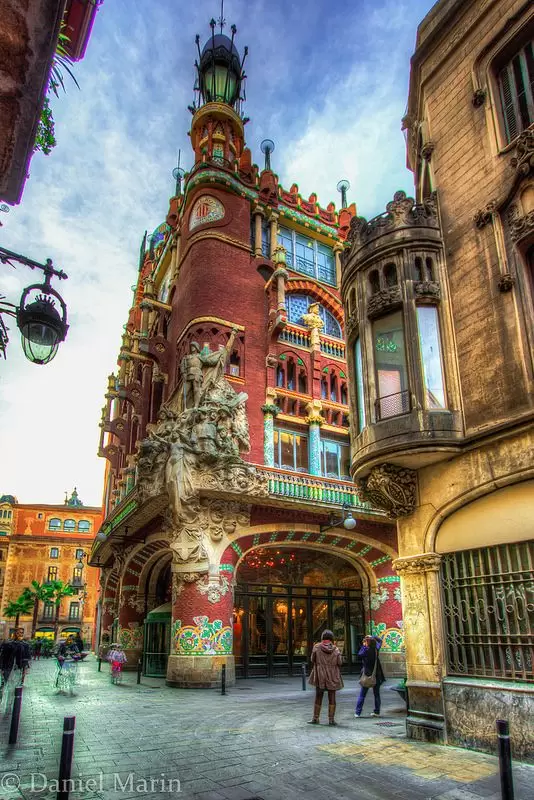
Palau de la Música Catalana is a world-renowned concert hall located in Barcelona. Built in 1908, this historic building is one of the most important examples of modernist architecture. However, various problems have arisen in the building over the years. Therefore, restoration work was initiated in the 1980s.
The restoration work was carried out to preserve the original architectural features of Palau de la Música Catalana. During these works, a special team was assigned to preserve and repair the historic textures in the building. In addition, all technical systems in the building were modernized.
The restoration work was completed in 1997. The building was restored true to its original form. Thus, the historic texture of Palau de la Música Catalana was preserved and passed on to future generations.
The restoration and preservation of Palau de la Música Catalana is an important example in terms of preserving historic buildings. These works serve as an example for the preservation of historic buildings in the future. In addition, thanks to these works, Palau de la Música Catalana has gained worldwide fame and attracted the attention of tourists.
In conclusion, the restoration and preservation of Palau de la Música Catalana is an important example in terms of preserving historic buildings. Thanks to these works, historic textures have been preserved and passed on to future generations. In addition, the building has gained worldwide fame and attracted the attention of tourists.
Unknown Facts About the Creator of the Palau de la Música Catalana, Lluís Domènech i Montaner
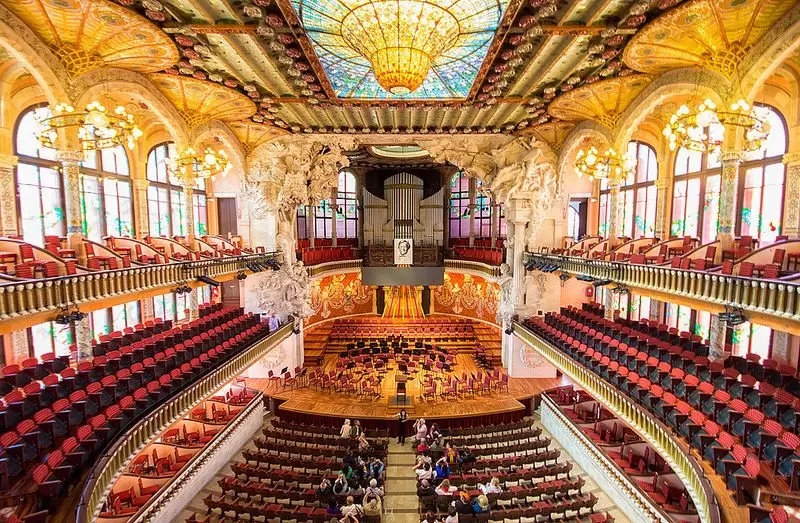
Lluís Domènech i Montaner is one of the most important figures of Catalan modernism. Born in Barcelona, Spain in 1850, Montaner had a significant career in architecture and politics. However, his most important work is the Palau de la Música Catalana.
Palau de la Música Catalana is one of Barcelona's most important concert halls. Montaner designed this building in 1905 and it was completed in 1908. The building is one of the most important examples of Catalan modernism and is listed as a UNESCO World Heritage Site.
When designing Palau de la Música Catalana, Montaner wanted to reflect Catalan culture and music. Therefore, the building features sculptures and mosaics by Catalan artists. Additionally, most of the materials used in the building are of Catalan origin.
In addition to Palau de la Música Catalana, Montaner has also designed many important buildings in Barcelona, including Casa Lleó Morera, Casa Fuster, and Hospital de Sant Pau.
Montaner was not only an architect but also a politician. In 1901, he founded the Lliga Regionalista party, which fought for Catalonia's autonomy, and became its leader. Montaner is known for his struggles for Catalonia's autonomy.
Lluís Domènech i Montaner is one of the most important figures of Catalan modernism. With buildings like Palau de la Música Catalana, he has promoted Catalan culture and music worldwide. He is also remembered for his struggles for Catalonia's autonomy.

Comments